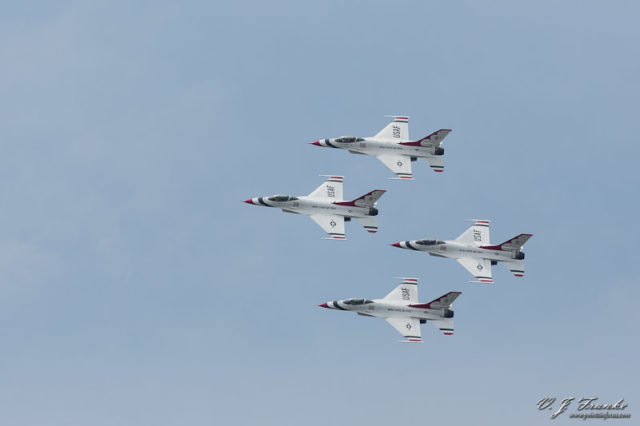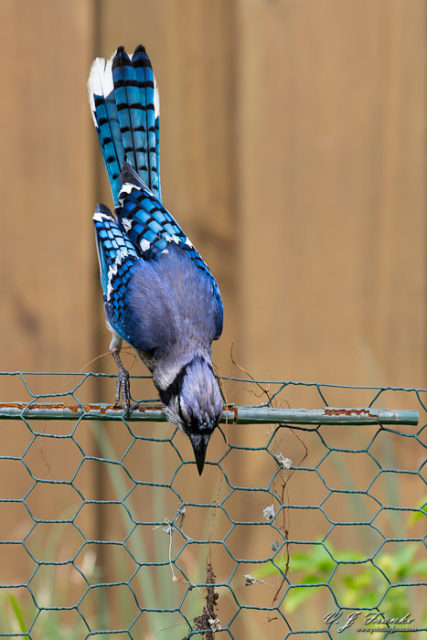

Rainbows are fickle things. This one was almost complete and a double when I first saw it; by the time I could do something about it, it was reduced to this. Remember, when shooting rainbows a circular polarizer is not just a nicety, it’s essential, though some post processing to really bring out the colors goes a long way too.
The 2011-2012 Volvo Ocean Race fleet has left Miami and are on their 2000-odd nautical mile voyage to Lisbon, Portugal.
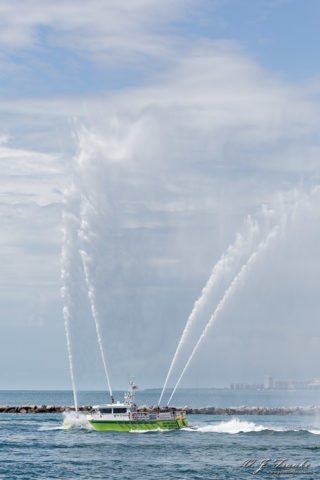
Though the crowds appeared nowhere near the levels they had been at previous ports of call, the fleet was led out of port by Miami-Dade Fireboat 1 with water cannons on full. The fleet motored out of port with Abu Dhabi at the lead, followed by Puma, Groupama, and Sanya, Camper and finally Telephonica.
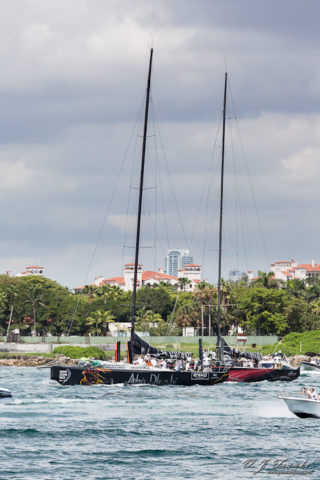 |
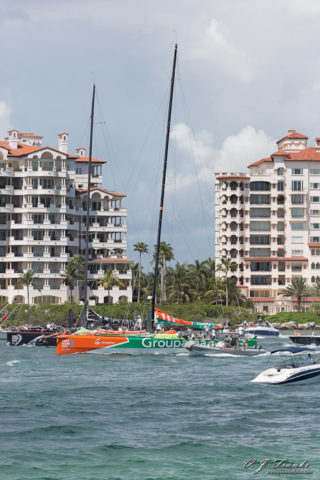 |
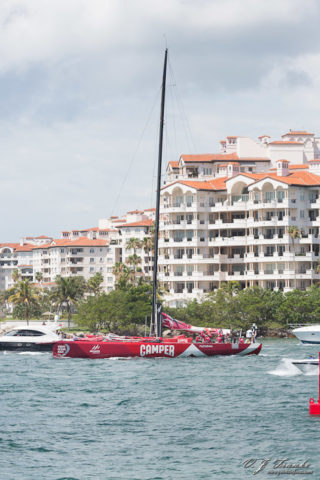 |
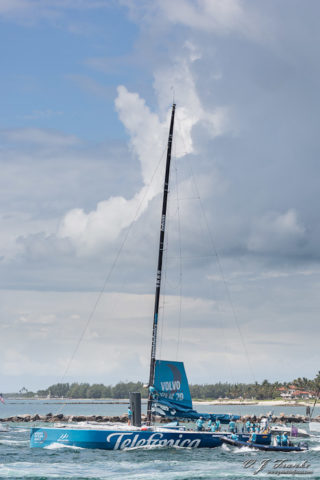 |
Unfortunately, Miami didn’t seem to have quite the turnout that was seen at some of the other ports the race had stopped in. Moreover, as a spectator, or photographer, stuck on shore, there was little real opportunity to see or shoot the races. The course for both the in-port and departure races was well off shore, and ran predominately east-west instead of parallel with the shore. Moreover, the races were hampered—though Abu Dhabi Ocean racing would disagree—by light wind and Florida’s wonderful afternoon thunderstorms.
That said, the overall point spread between the top 4 boats was cut to a mere 14 points, and with 3 ocean legs and 3 in-port races to go the winner is anything but certain. We wish the crews and boats of the Volvo Ocean race good sailing and good weather, even if there’s a tropical storm in their way.
The Miami Pro-am for the Volvo Ocean Race couldn’t have happened on a worse day photographically. While the boats finally got some breeze in the after noon, the sky was a horrid pale hazy Florida summer blue. Since I’m neither bound by or need or desire to always represent reality as it was, I’m free to paint the picture the way I wish it was, and sometimes I do. (Click to enlarge)
Puma Ocean Racing’s entrant in the 2011-2012 Volvo Ocean Race, Mar Mostro (Monster of the Sea), sails down the Port of Miami shipping channel after winning Leg 6 (Itajai, Brazil to Miami, FL, United States). The Volvo Ocean Race is a 39,000-mile, 10 month, regatta that circumnavigates the globe stopping briefly in ports around the world to replenish, race, and make repairs.
Puma Ocean Racing’s entrant in the 2011-2012 Volvo Ocean Race, Mar Mostro (Monster of the Sea), sails with the spectator fleet after winning Leg 6 (Itajai, Brazil to Miami, FL, United States). The Volvo Ocean Race is a 39,000-mile, 10 month, regatta that circumnavigates the globe stopping briefly in ports around the world to replenish, race, and make repairs.
Puma Ocean Racing’s entrant in the 2011-2012 Volvo Ocean Race, Mar Mostro (Monster of the Sea), sails with the spectator fleet after winning Leg 6 (Itajai, Brazil to Miami, FL, United States). The Volvo Ocean Race is a 39,000-mile, 10 month, regatta that circumnavigates the globe stopping briefly in ports around the world to replenish, race, and make repairs.
I undertook a personal search in an attempt to try and find the limits and conditions where one could expect the EOS 5D Mark 3’s light leak to affect their metered exposure. In the process of making these measurements, I’ve tried to account for and control errors as best I can; however, in many cases I lack the appropriate instrumentation to make precise measurements.
My initial objective had been to build a mathematical model to quantify the problem and then make testable predictions from it. In the process of doing that it became painfully clear that I lacked the precision in test instrumentation to make it count for much. Though it did turn out to be a good point to start from in the empirical tests I ended up doing.
I’ve been seeing an intermittent but reoccurring issue over the past couple of days with my 5D mark 3 and 8GB SandDisk Extreme III 30MB/s flash cards. I will, on occasion, get an ERR 2 that the camera can not write to the card. Removing and re-seating the card will fix the problem for the duration of the time the card is in the camera.
Now before people start with the Canon fail drama on this, these are old, fairly well used (but not excessively), non-UDMA cards, and that I don’t see the issue in any consistent way. Nor do I seem to have an issue when using my Lexar 16GB 300x UDMA cards, though I’ve not used them enough to be really sure.
Also the issue seems to be both intermittent and dependent on how much writing the cards are doing. I can blow though the entire card several times over, then all of a sudden at the end of an extended high FPS shoot or while recording a video segment, it throws an ERR 2. I can’t do anything on the camera with respect to shooting or what not that prompts the issue. The only thing I’ve noticed is that after heavy use the CF cards are warmer than they’ve ever been for me—I think this is expected due to operating at near maximum write speed—but at the same time it may be contributory to what I’m seeing.
As it stands I’m leaning towards this being a localized card issue but I thought I’d throw this up and see if anybody else was seeing something similar.
If you’re seeing an ERR 2 or a card write failure and have a Canon 5D Mark 3, if you wouldn’t mind please drop a comment in the comments section with the type of card you’re using, what you were doing (i.e. continuous bursting, recording video, etc.), whether the card is UDMA or not, and approximately how well used it is?
Update 2012-10-23: Just an update to this. I have since tested 3 different Lexar Pro 400x UDMA cards (all 32GB) in my 5D-3 and have yet to see a problem with any of them. So far it seems like the mid-range UDMA Lexar cards work reliably in my 5D3, I couldn’t justify 1000x cards to see if I got issues similar to what Greg reported in the comments.
